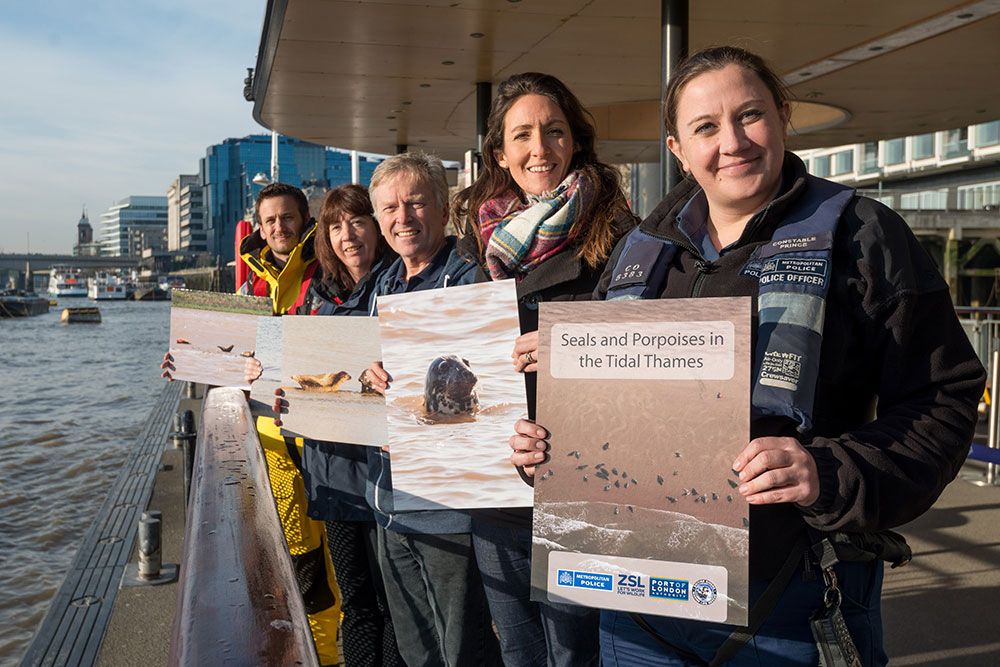04.01.2018
New advice on marine mammals in the Thames
London’s river and emergency authorities have issued simple guidance to the public on what to do if they see a marine mammal in the tidal Thames, as more harbour seals, grey seals and harbour porpoises visit the river and its banks.
The tidal Thames, particularly in Central London, is attracting increasing numbers of marine mammals – the latest annual seal survey from ZSL (Zoological Society of London) reported over 3,000 animals of both species living in the estuary – and people have been unsure what to do when they encounter them. Now the Port of London Authority (PLA), ZSL, British Divers Marine Life Rescue, the Metropolitan Police, RSPCA, RNLI and London Fire Brigade have come together to offer simple advice.

Their new leaflet, called Seals and Porpoises in the Tidal Thames, includes simple guidance on how to tell if the animal looks healthy and happy, unwell, or has passed away.
PLA environment manager, Tanya Ferry explained: “The tidal Thames is a unique and important habitat for hundreds of species of fish, invertebrates and marine mammals. As the condition of the Thames environment has improved, we have been recording increased observations of seals, porpoises and other marine mammals.
“With that in mind, we came together to help people understand how best to help these beautiful animals. The most important thing, if they look healthy, is simply to admire them from afar and leave them to enjoy the river. Members of the public only need to intervene if they’re concerned about the animal appearing to be unwell and in those cases, they should not approach it, simply call us at the PLA, so that we can coordinate any rescue response appropriately.”
Thames conservation manager Anna Cucknell from ZSL commented: “Every year, reports are received of “seals in need of rescue” in the Tidal Thames, when they are simply ‘hauling out’ or resting on mudflats or pontoons. The guidance we’ve put together gives concerned members of the public the simplest of points to look out for and, if they are still concerned, the numbers to call.”
Nicky Prince of the Met Police's Marine Unit said: “The leaflet provides advice to protect marine mammals but we also want to remind members of the public that they should not approach marine mammals as they may put themselves in danger.”
The Seals and Porpoises leaflet advice is:
A. If animal looks healthy and happy:
Admire the animal from a safe distance only – you could put yourself in danger and cause the animal distress if you approach it. Report your sighting to ZSL's #inthethames
map: zsl.org/inthethames/
B. If you are unsure on the health of the animal:
Report sighting to PLA Vessel Traffic Services on 0208 855 0315
The PLA will assess if the animal needs to be rescued and will contact British Divers Marine Life Rescue (BDMLR) or RSPCA if necessary.
Please do not attempt to rescue the animal yourself.
C. If the animal is dead:
Please report your sighting to the PLA Vessel Traffic Services on 0208 855 0315 who will coordinate with the UK Cetacean Stranding Investigation Programme (CSIP).
The full leaflet can be viewed and downloaded on the PLA website at: https://www.pla.co.uk/assets/thamesmarinemammalsleaflet.pdf
Partnership and further information is hosted by ZSL at: www.zsl.org/thamesmammals

